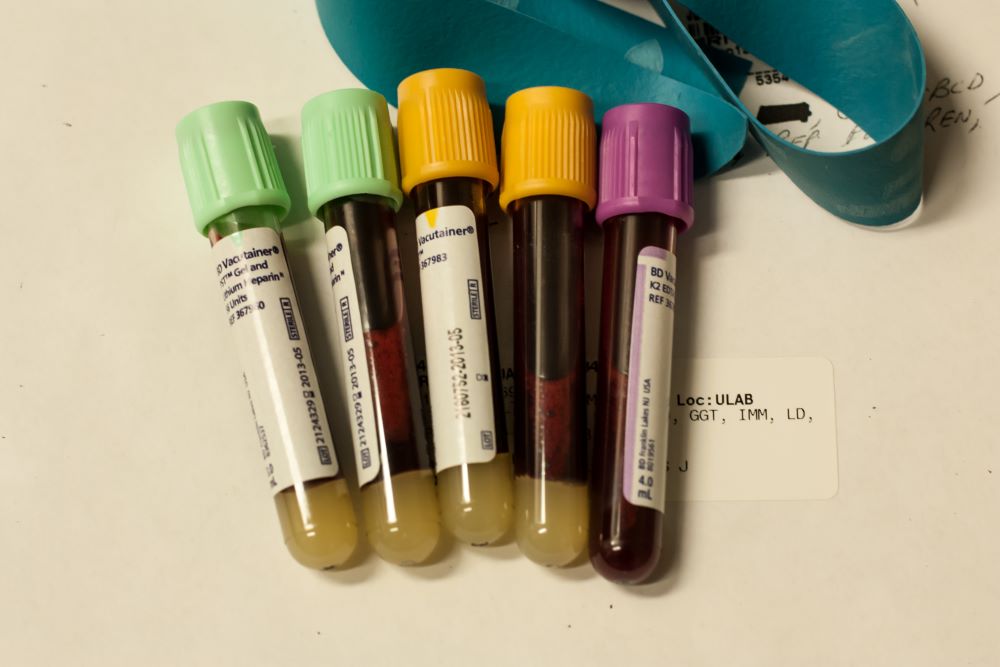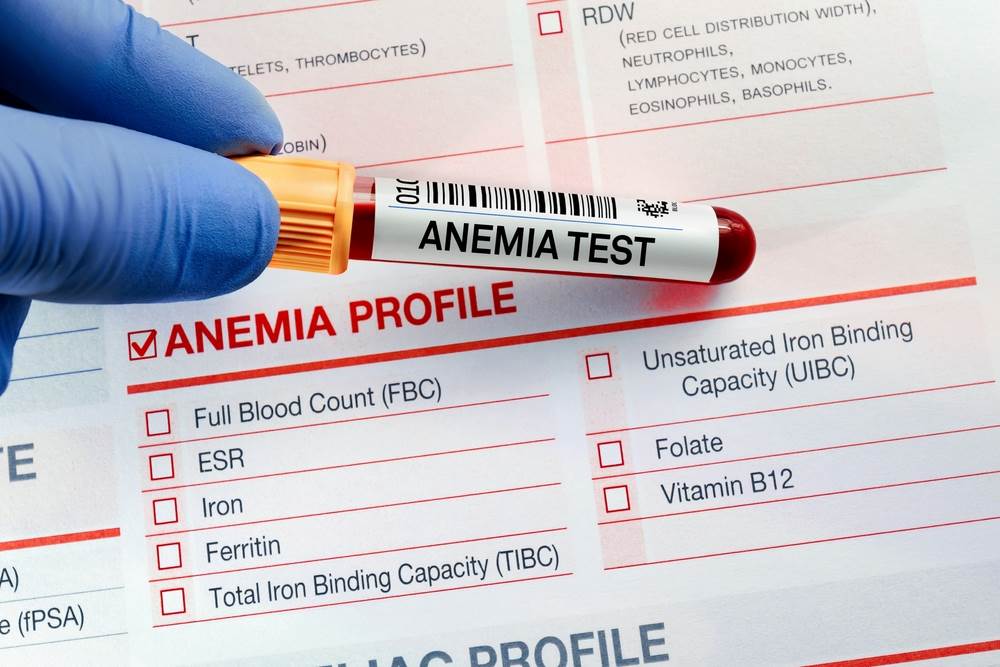What is Erythrocyte Sedimentation Rate (ESR) Test for Blood?

If a medical expert suspects a high level of inflammation in a body, they might recommend a blood test known as the Erythrocyte Sedimentation Rate (ESR) Test. This blood test helps to monitor inflammatory diseases. Based on ESR levels, different illnesses could be diagnosed, and the efficacy of therapies could be monitored.
Continue reading this article to learn more about the ESR test, including its purpose, how to interpret the results and the different types of ESR tests that exist.

Table of Contents

What Is an ESR Test?
An ESR test is the measurement of how quickly the red blood cells in a blood sample sinks to the bottom of the test tube. The full form of ESR is the erythrocyte sedimentation rate. It is also known as the sed rate. Usually, the red blood cells should settle down slowly. If the RBCs settle down faster than the normal rate, it might indicate inflammation in the body. Inflammation may be a symptom of an immune disorder, a chronic disease or other health conditions.
What Is the Need for an ESR Test?
The ESR test determines if a person has a condition that causes inflammation. The conditions include vasculitis, inflammatory bowel disease or arthritis. It is also used in order to monitor any existing condition. Your doctor may recommend you an ESR test if you have the signs of inflammatory conditions. These include –
- Headaches
- Fever
- Weight loss
- Loss of appetite
- Anaemia
- Shoulder or neck pain
- Joint stiffness
When Should I Get the ESR Test?
Deciding when to get an ESR test can feel a bit confusing. It’s all about knowing the right time to check in on your health so you and your doctor can stay on top of any potential issues.
- Inflammation Symptoms: In case you have a fever that you cannot explain, joint pain, stiffness, or other problems that imply an infection or inflammation.
- Autoimmune Disease Diagnosis: When there is suspicion of diseases such as lupus and rheumatoid arthritis, which are characterised by chronic inflammation.
- Chronic Condition Monitoring: It helps assess how severe and progressive chronic inflammatory diseases are among individuals.
- Undiagnosed Symptoms Assessment: The fact that symptoms such as loss of weight, fatigue, and general discomfort persist for a long time without a clear cause.
- Treatment Evaluation: This will help determine the efficiency of treatments for infections or inflammatory illnesses over time.
What Are the Different Types of ESR Tests?

1. Westergren Method
It is the most common type of ESR test. In this test, a person's blood is taken out in a Westergren-Katz tube till the blood level touches 200 millimetres. The tube is kept vertically at room temperature for an hour. Then, the distance between the top of the blood mixture and top of the sedimentation of red blood cells is measured.This method is highly accurate and widely used due to its sensitivity to inflammation and disease.
2. Wintrobe Method
This method is the same as the Westergren method. However, the tube is thinner and 100 millimetres long. The drawback of this method is that it is less sensitive compared to the Westergren method.It may be used in specific circumstances where the Westergren method is not available, but it is generally less preferred for its lower sensitivity and accuracy.
Who Should Take an ESR Test?
Any individual experiencing signs of inflammatory disorders such as IBD (inflammatory bowel disease) or arthritis should take an ESR test. The symptoms of inflammatory disorders include –
- Stiffness or joint pain which lasts more than thirty minutes in the morning
- Headaches associated with vision changes and pain in temples
- Sudden weight loss
- Pain in shoulders, pelvis or neck
- Digestive disorders such as diarrhoea, fever, blood in stool, unusual pain in the abdomen
What is the Procedure for the ESR Test?
It is very easy to administer the ESR test. Here, we will discuss what you should anticipate when going for it.
Step 1: Getting Prepared: Generally, people need no specific preparations for this kind of test, although your doctor may ask you not to take certain medications before the procedure.
Step 2: Drawing Blood: a healthcare professional will clean the skin with an antiseptic and then use a needle to collect a blood sample from one of your veins.
Step 3: Processing Blood: The blood is collected in a tube and sent to the laboratory, where it’s placed into a long, thin tube to observe how fast red cells fall after that.
Step 4: Interpretation of Results: The rate at which RBCs settle down is measured in millimetres per hour (mm/hr). Higher values can indicate inflammation or other types of disease.
Step 5: Post-test Care: The puncture site will be covered with a dressing. This means there is no downtime, as you are allowed to go about your normal activities instantly.
How to Prepare for an ESR Test?
An erythrocyte sedimentation rate test needs a little preparation. Individuals must tell their doctor if they are using any medications. They might ask to stop taking medicine temporarily before the test. Several medications affect the test results. For example, nonsteroidal anti-inflammatory drugs, steroids and statins might result in false low ESRs. However, no one should stop using any prescribed medications before the consultation with the doctor. Furthermore, fasting before the test is unnecessary.
How is ESR Measured in Blood Tests?

A blood sample is taken from a vein in your arm, usually the one inside the elbow, and then placed into a tall, thin tube. The tube is left undisturbed for about one hour, allowing the red blood cells to settle at its bottom.
After that, healthcare professionals measure how far they have fallen as millimetres per hour (mm/h). An elevated ESR may mean inflammation or other health issues and can help doctors determine if certain conditions are present and how severe they may be.
How to Read an ESR Test Report?
The results of erythrocyte sedimentation rate are calculated in millimetres per hour (mm/hr). The faster the sedimentation rate, the greater the degree of inflammation or the presence of an underlying condition. The greater the value, the higher the chances of inflammation. Typically, females have higher levels of ESR than males.
Normal ranges may vary based on age, gender, and health status, so it's crucial to interpret these values in the context of individual health conditions and symptoms.
Normal Range of ESR in Blood Test
ESR’s normal range depends on age, gender, and the laboratory where it was performed. Typically, women have slightly higher ESR levels than men, meaning that with age, the normal range might increase.
ESR levels can indicate different health statuses ranging from normal to potentially high or low, which may require further medical evaluation. Normal and abnormal sed rate test results are mentioned in the table below:
| Gender and Age | Normal Test Results | Abnormal Test Results |
| Females under 50 | Between 0 and 20 mm/hr | Greater than 20 |
| Males under 50 | Between 0 and 15 mm/hr | Greater than 15 |
| Females over 50 | Between 0 and 30 mm/hr | Greater than 30 |
| Males over 50 | Between 0 and 20 mm/hr | Greater than 20 |
| Children | Between 0 and 10 mm/hr | Greater than 10 |
Symptoms of High ESR

You might have some telltale symptoms if your doctor suspects a high ESR. Knowing these signs will inform you when further evaluation should be done.
What Should You Do If You Have High ESR?
If the sedimentation rate of your blood is very high, you should work with the doctor to identify the cause of high ESR and treat the underlying conditions, if any. However, there are several lifestyle changes and strategies listed below that will help you prevent high ESR –
- Lead a hygienic and healthy lifestyle to stay protected from infections.
- Exercise regularly to decrease inflammation and ESR levels.
- Include gluten-free vegan, lacto-vegetarian foods, fish oil, Vitamin A and E in your daily diet.
- Lose weight to decrease the ESR levels.
- Use drugs that fight inflammation to reduce the ESR levels. These drugs include Tocilizumab, Levamisole, NSAIDs and Cortisone.
Disclaimer: Make sure to use drugs and supplements after consulting your doctor.
What Are the Causes of High ESR?
There are multiple causes of high ESR results. The conditions which cause high ESR are as follows –
Symptoms of Low ESR
Symptoms indicating low ESR may sometimes include experiencing a low ESR. Knowing these signs will enable you to comprehend your condition better, thus communicating effectively with your physician when necessary.
What If ESR in Blood is Low?
A low ESR usually means no significant inflammation or infection in your body. Nevertheless, low ESR can be normal sometimes, particularly when you are otherwise healthy.
However, it might also indicate medical conditions like polycythaemia (excessive red blood cells), various types of anaemia, or other rare diseases. One should consider his/her general health and symptoms to evaluate the meaning of a low ESR.
Consulting with a healthcare provider is essential to understanding the implications of a low ESR result and determining whether further investigation or treatment is needed.
What Are the Causes of Low ESR?
Low ESR levels can occur for a variety of reasons, often linked to underlying health conditions. The following conditions generally cause low ESR:
Therefore, the ESR test is a blood test that helps your doctor measure the inflammation in the body. Generally, it is done with other tests to treat or diagnose a variety of inflammatory diseases. Based on the result of the test, the doctor might recommend more testing or refer to a specialist. Individuals experiencing inflammatory disease symptoms must consult with their doctor at the earliest.
Protect What Matters - Explore Other Insurance Options














